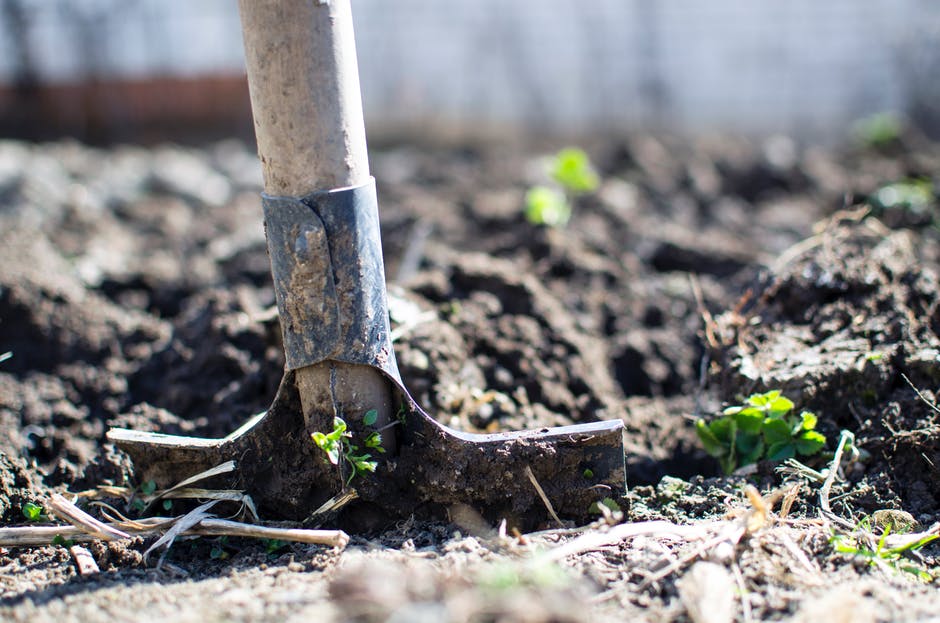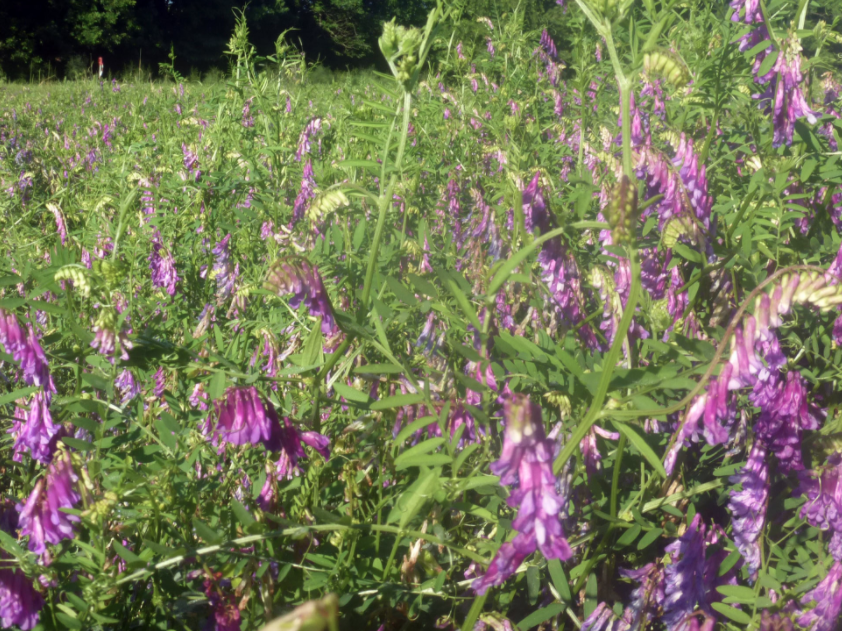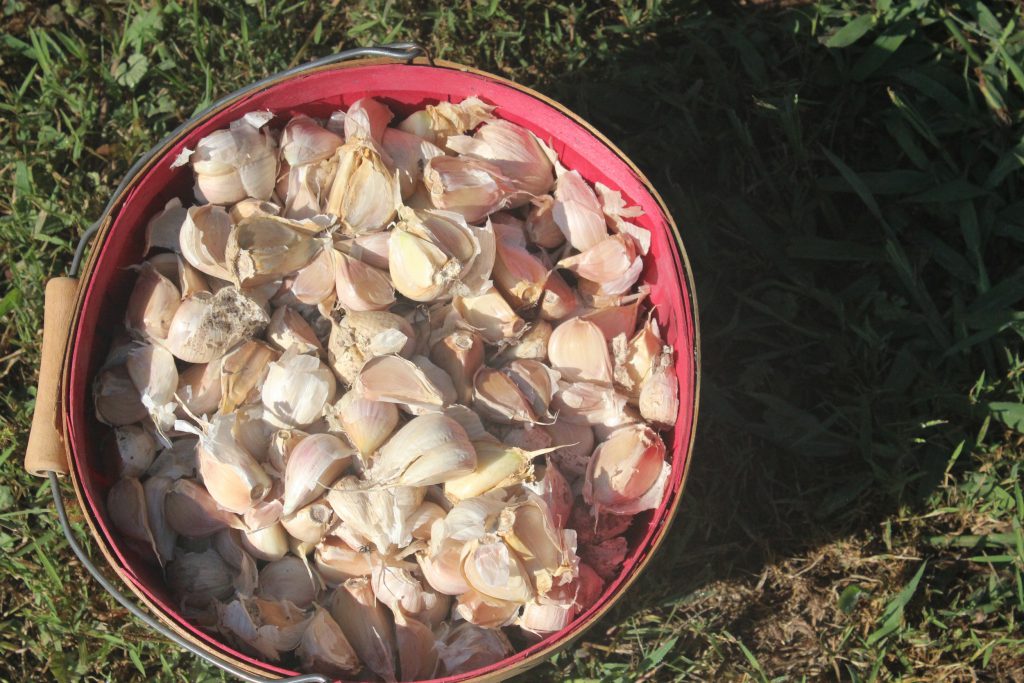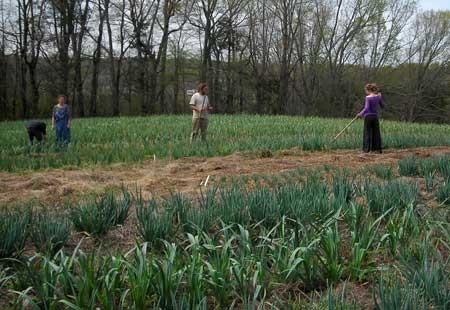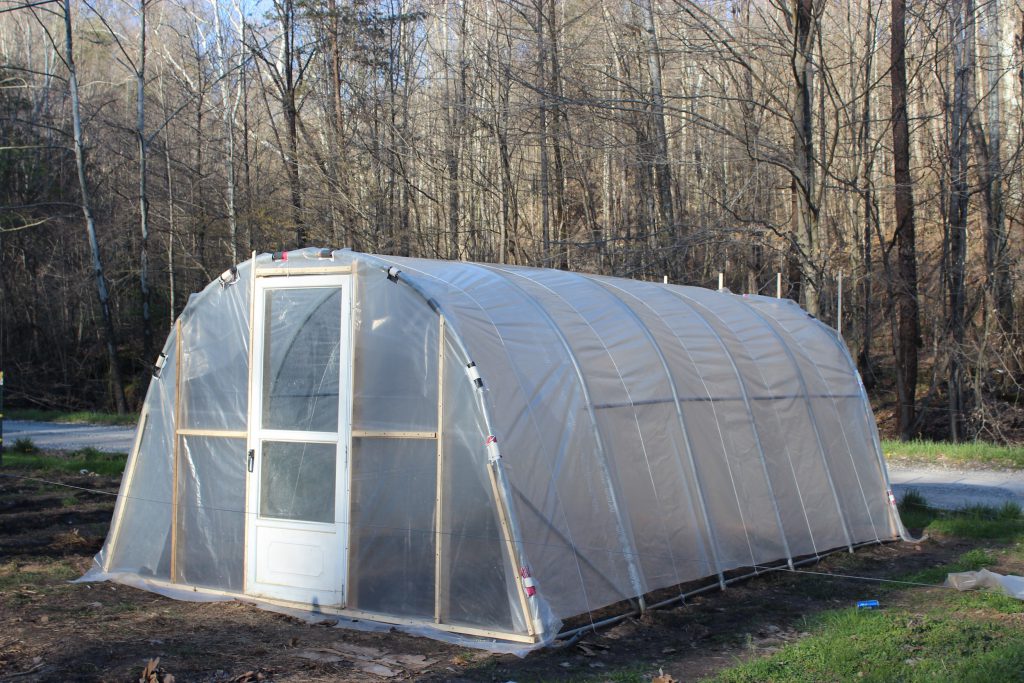
Hoop houses or high tunnels are excellent season extenders. They can keep you family in fresh greens all year round or give you the earliest tomatoes in the neighborhood. Unfortunately they can be pricey. Here’s a few simple options for creating affordable hoop houses.
Garage Frame High Tunnel
One of the easiest options is to use an old garage or storage building frame. If you see one for cheap or free on craigslist or your local classifieds, scoop it up! These are perfect for making small high tunnels with the little effort it takes to frame in the ends and add a door and plastic. The example pictured above was picked up for free, has a free used door, scrap lumber was used to frame in the ends, and the plastic was clamped to the piping using small sections of PVC pipe with slits cut in them.
Conduit High Tunnel
If you like the idea of the storage building hoop house but can’t find a used one you might consider making your own from conduit. Conduit is relatively inexpensive and can be bent at home using a homemade frame.
Cattle Panel High Tunnel
Another option is to use cattle or hog panels as the main frame. The panels are bent over and staked at each end. Like the other hoops you’ll still want to frame up the end and add a door. These are also a nice option because they’re easy to dismantle and move even if you’re a one person garden operation.
Low Tunnels
If you find none of these options work for you or you just don’t need a high tunnel, try a low tunnel! For low tunnels all you need is some hoops to bend over a garden bed and plastic. The hoops can be made from conduit, PVC, or even flexible wood from your property (just make sure to shave/sand off any spots that might tear the plastic). If you have a traditional garden the hoops can just be shoved into the ground on either side of the bed. Alternatively for raised beds you can add holders like slightly larger sections of PVC to the side of the bed to slide the hoops in and out of for easy set up and removal. Those holders could also be be driven into the ground for the same purpose. These low tunnel hoops also double as a way to cover crops with shade cloth to keep them cool or protect them from insects.
Purchasing Plastic
There’s a few considerations to keep in mind whatever frame you choose. First even though the rest of your hoop may be cheap or free you do want to invest in good quality plastic. Cheap plastic will only cost you more in the long run when it needs frequent replacing. To find good plastic look for plastic that has a good UV rating (won’t deteriorate in the sun) and is fairly thick. If you live in a northern climate you’ll need to keep in mind that your plastic will have to stand up under snow loads. Most likely you’ll find good quality plastic must be sourced from an actual green house supplier.
You’ll also want to make sure you purchase enough plastic for your project. Note that even though some large hoop houses have solid ends, your hoop house will be more effective with plastic or another type of clear material on the ends. So don’t forget to take the ends into consideration when purchasing plastic. You should also be sure to order a bit extra to leave room for error.
Ventilation
Another feature you’ll want to consider on any type of greenhouse is a way to vent it. High and low tunnels will get hotter faster than you’d think. Being able to allow cool air in as needed is vital to prevent damage to plants. Good air circulation is also important to preventing fungus and disease. For high tunnels you may want to add doors and windows on each end or fashion sides that roll or fold up. On smaller hoop houses you can just make the lower part of the plastic sides easily detachable and fold it up and inward (if you fold it outward it will fill with rainwater). Obviously for low tunnels venting them is very easy because you can simply fold back the plastic but it is even more important.
Choosing a Site
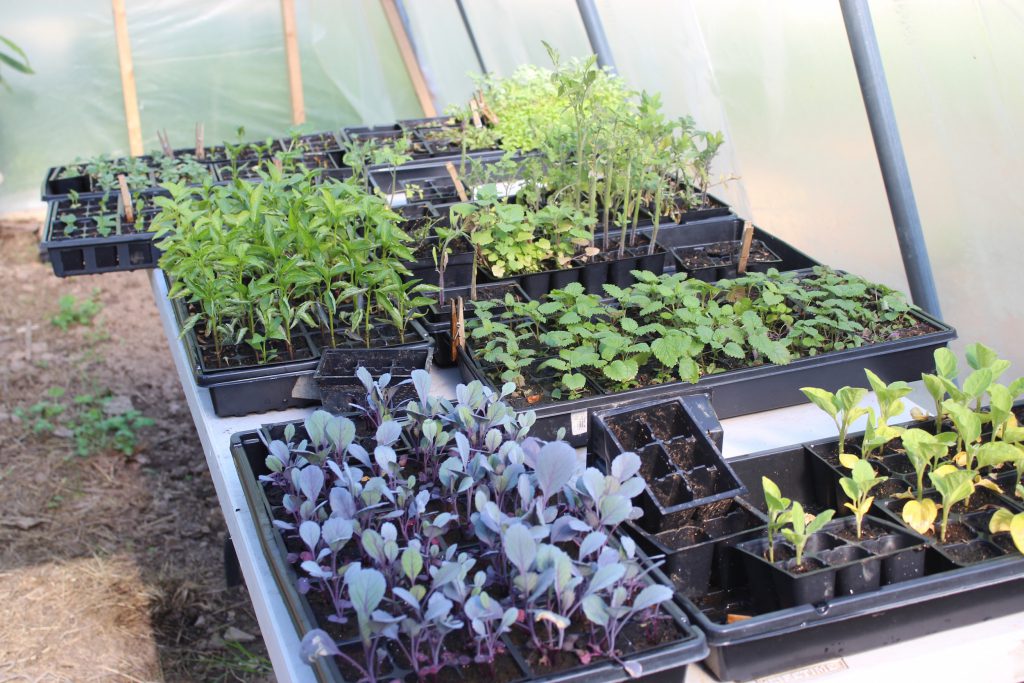
Lastly it’s you’ll need to decided where you want to place your hoop house. It can be especially handy to have them close to the house in springtime when you’ll be spending a lot of time checking on and caring for seedlings. You’ll also want to ensure that one of the longer sides is facing south allowing the high tunnel as much sun as possible especially in the winter months.
Hoop houses do not have to be just for big farms! With a little effort you can create an affordable backyard hoop house even on a tiny property. Growing food in a high tunnel can help increase your year round self sufficiency and help you grow varieties that really like it hot and humid. Up your gardening game and start building!

